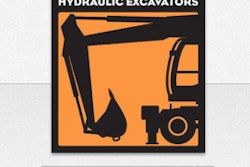
The controversy surrounds the cranes and derricks in construction standard, 29 C.F.R. 1926.1427, approved by OSHA back in 2010. To meet the standard, employers will be required to either certify crane operators themselves using an evaluation program that has been approved by a third-party agency, or use a third-party testing agency.
Bloomberg BNR reports that at the meeting there was little agreement on the definitions of “certification” and “qualification” and who has the right to decide whether an operator is qualified or not.
There was also concern over how operators will be tested and what they will be tested on. Many raised the concern that a lot of time and money could be wasted testing crane operators who are, in their employer’s opinion, fully “qualified” to operate but have yet to be certified.
And then there is the issue of whether OSHA will requires operators to be certified for each and every configuration and capacity of crane. Should that happen, opponents to the new rules say testing costs would increase while countless qualified operators are forced to become “certified” by November 2014.
Despite the opposition, Jim Maddux, head of OSHA’s Construction Directorate, said that while changes to the rule or an interpretation that addresses these concerns could be written, a major overhaul was not likely.
“These requirements have a strong legal foundation,” Maddux said.
The Association of Equipment Manufacturers recently voiced its support of the crane makers who oppose the new rules.
“OSHA’s current interpretation harms manufacturers by imposing millions of dollars of unnecessary testing costs on employers of crane operators,” read a prepared statement from AEM. “In September 2012, AEM recommended that OSHA endorse a banding proposal of 14 groupings of cranes and capacities…These groupings should be considered equivalent in operating requirements for training and certification purposes.”
“Endorsement of these bands will allow certifying bodies to continue to certify operators and issue cards with type and capacity without the need to test operators on the largest crane in a band.”














